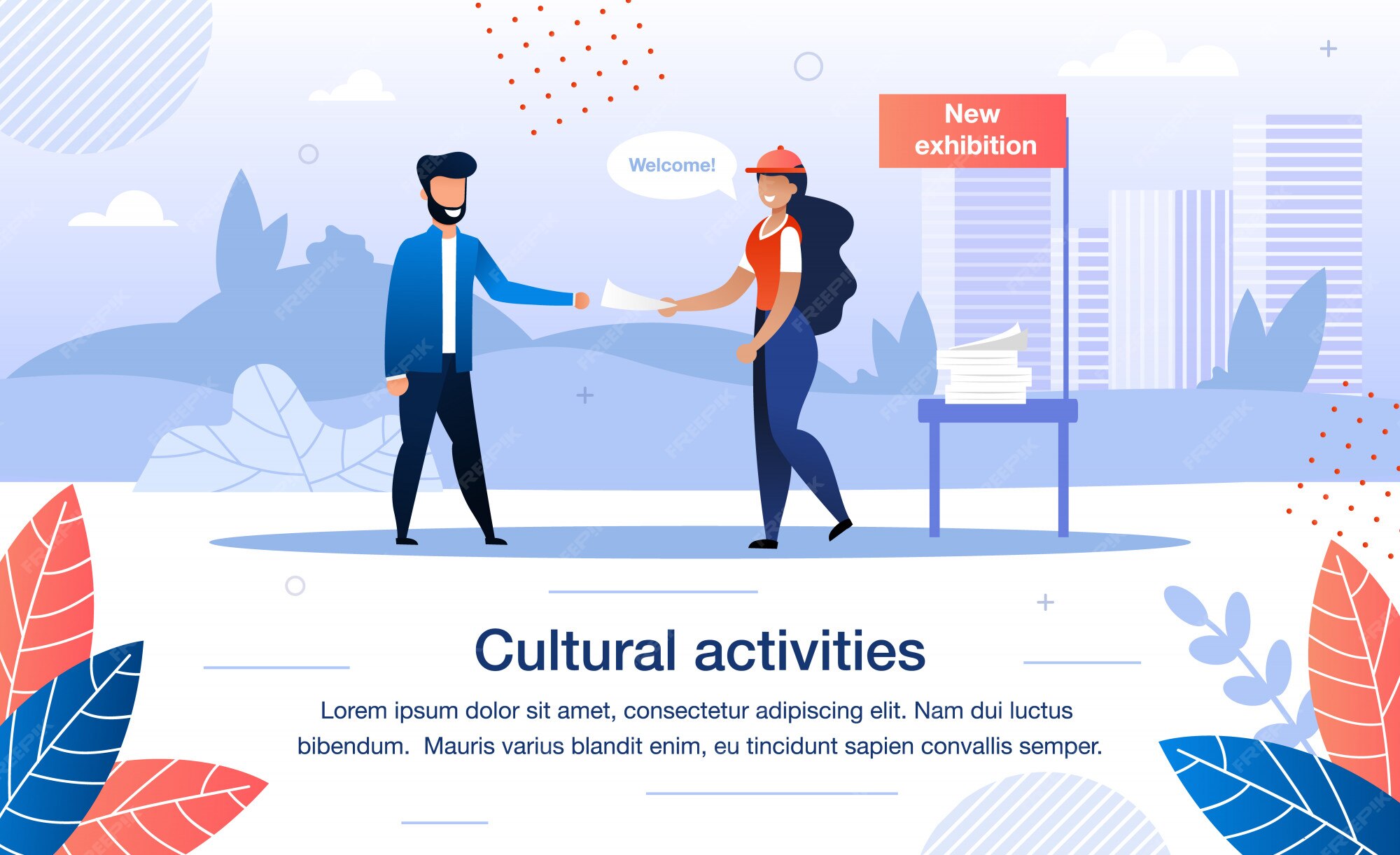In a world rapidly changing due to globalization, the preservation of cultural heritage is essential. Cultural activities bring communities together, serving not only as a means of expression but also as a form of education and awareness. The burgeoning trend of utilizing clip art banners to promote these activities sheds light on the need for creative representations of cultural engagements. This discourse delves into the significance of a cultural activities clip art banner, revealing its potential to shift perspectives and ignite curiosity.
The visual aspect of cultural representation cannot be understated. Clip art offers an immediate impact, capturing the essence of cultural festivities in an engaging manner. By using vibrant and symbolic imagery, these banners facilitate a deeper connection to the cultural narratives they aim to represent. A well-designed clip art banner introduces viewers to a myriad of events, traditions, and practices, rekindling interest and encouraging participation. It becomes a visual invitation to explore the rich tapestry of diverse cultural activities.
Understanding the importance of cultural visibility is the first step in fostering engagement. Banners that depict traditional dances, art forms, or communal celebrations symbolize the vibrancy of cultures that might otherwise be overshadowed. These visual representations serve as a bridge, fostering understanding and appreciation among people from different backgrounds. In this light, cultural activities clip art banners can be seen as tools for dialogue; they spur conversations around shared human experiences while inviting audiences to explore the nuances of various traditions.
Moreover, in the realm of climate activism, the intersection of culture and environmental consciousness is particularly poignant. Cultural practices often encompass sustainable living principles rooted in local traditions and ecological knowledge. Clip art banners promoting environmental initiatives, while celebrating cultural activities, can elucidate the relationship between cultural heritage and environmental stewardship. They illustrate how traditional practices can offer solutions to contemporary ecological challenges.
Furthermore, creativity plays a pivotal role in capturing attention. A clip art banner that incorporates elements of storytelling can evoke nostalgia and a sense of belonging. A meticulous design, animated with colors, textures, and shapes typical of specific cultural artifacts, can provoke curiosity. When individuals encounter a banner representing cultural activities, they may find themselves pondering deeper questions: What stories lie beneath the surface of this illustration? How do these activities contribute to a more sustainable future? This curiosity opens a pathway to explorative conversations and learning, bridging generational divides and fostering community involvement.
The artistic representation of cultural activities through clip art is not merely for aesthetic appeal; it embodies the values and principles of the communities it represents. When people look at these banners, they see reflections of themselves, their identity, and their values. This recognition can elicit a sense of pride, driving individuals to partake in these activities with renewed enthusiasm. By promoting cultural activities through engaging visuals, communities can revitalize their traditions, ensuring they endure through generations.
In portraying cultural activities, it is vital to respect and honor the diversity of the traditions depicted. Clip art has the capacity to encapsulate the essence of these customs; however, the nuances must be carefully considered. It is crucial to engage with community members in the design process, ensuring that their perspectives and stories are authentically represented. In doing so, the clip art becomes a collective narrative rather than just a mere representation, fostering an environment of inclusivity and empowerment.
Moreover, the accessibility of clip art in the digital age has democratized the way cultural activities are represented. Communities can easily create their own unique banners, showcasing local events without the constraints of traditional marketing budgets. This accessibility beckons a new era of grassroots activism — where individuals take charge of their narratives, fostering connections based on mutual respect and understanding. The clip art serves as a beacon, guiding individuals and communities towards celebration and appreciation of cultural diversity.
Additionally, the educational potential of cultural activity clip art banners extends beyond mere representation. They can be employed in schools and community centers as visual aids to teach young people about various cultures. This promotes cultural literacy and encourages respect for diversity from an early age. By launching workshops or collaborative projects that involve creating clip art, communities can engage youth actively. This participatory approach allows younger generations to gain insights into their heritage while fostering an environment ripe for questioning and discussion.
Equally important is the role of social media in amplifying these cultural representations. Digital platforms serve as powerful mechanisms for outreach. Clip art banners can be shared widely, generating buzz and interest in local cultural events. They provide a platform for cultural dialogue, inviting individuals from different geographies to participate in discussions surrounding cultural preservation and environmental advocacy. The viral nature of social media, combined with the engaging aesthetic of clip art, can lead to a collective awakening, drawing attention to both cultural activities and pressing environmental issues.
In conclusion, cultural activities clip art banners hold substantial potential for transforming how cultural expressions are perceived and engaged with. They promise a shift in perspective, inviting exploration of the intricate relationship between culture and environment. Through engaging visuals, these banners foster curiosity and dialogue, bridging communities and enriching understanding. Therefore, as individuals and organizations strive to weave cultural heritage into the fabric of contemporary society, clip art serves as an essential tool in the advocacy for both cultural vitality and environmental sustainability.
